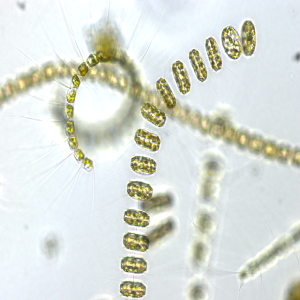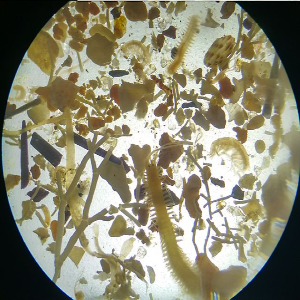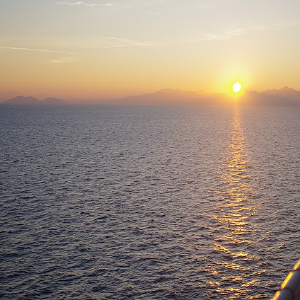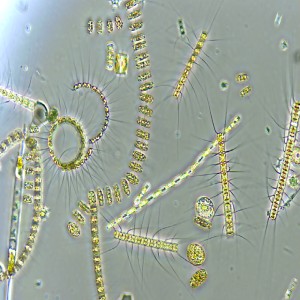Sea ice phenology in the Caspian Sea
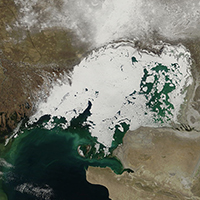
Accepted: 24 August 2021
HTML: 2
All claims expressed in this article are solely those of the authors and do not necessarily represent those of their affiliated organizations, or those of the publisher, the editors and the reviewers. Any product that may be evaluated in this article or claim that may be made by its manufacturer is not guaranteed or endorsed by the publisher.
To understand the spatial and temporal variations in the extent and timing of sea ice in the Caspian Sea (CS), 15 years of sea ice presence and its phenology (freeze-up, break-up, and duration) were studied in the Northern CS (NCS) for a period from 2004 to 2018. This study indicated that the percentage of sea ice covered area in the CS showed fluctuations ranging from 54.2% in 2004 to more than 89% in 2006 and 2008. This study, furthermore, found regional differences within the NCS in sea ice phonological features during 2004 to 2018. Specifically, earlier sea ice formation, later ice melt, and longer ice periods were observed in the eastern than the western NCS. Noticeable interannual changes were also observed in the timing and duration of the NCS ice (2004-2018). However, most parts of the NCS did not show significant trends (P>0.05) in the formation, decay, and duration of sea ice and their interannual variability. The observed spatial and temporal patterns in the CS ice can have implications for phytoplankton blooms and higher trophic levels, such as fish and endangered Caspian seal populations and merits further investigation.
Baklagin VN, 2019. Variations of indicative dates of ice regime on Lake Onego based on ground air temperature. Adv Ocean Limnol 10:24-32.
Barale V, 2010. The European and marginal seas: An overview, p. 3-22. In: V. Barale, M. Gade (eds.), Remote Sensing of the European Sea. Springer.
Cushing DH, 1990. Plankton production and year-class strength in fish populations – an update of the match mismatch hypothesis. Adv Mar Biol 26:249-293.
Dmitrieva L, Härkönen T, Baimukanov M, Bignert A, Jüssi I, Jüssi M, Goodman S, 2015. Inter-year variation in pup production of Caspian seals Pusa caspica 2005–2012 determined from aerial surveys. Endanger Species Res 28:209-223.
Fairbridge RW, 1966. Encyclopedia of oceanography. Reinhold Publishing Co., New York: 1021 pp.
Fendereski F, Vogt M, Payne MR, Lachkar Z, Gruber N, Salmanmahiny A, Hosseini SA, 2014. Biogeographic classification of the Caspian Sea. Biogeosciences 11:6451-6470.
Hague M, Vichi M, 2018. A link between CMIP5 phytoplankton phenology and sea ice in the Atlantic Southern Ocean. Geophys Res 45:6566-6575.
Ibrayev RA, Ozsoy E, Schrum C, Sur HI, 2010. Seasonal variability of the Caspian Sea three-dimensional circulation, sea level and air-sea interaction. Ocean Sci 6:311-329.
Ji R, Jin M, Varpe Ø, 2013. Sea ice phenology and timing of primary production pulses in the Arctic Ocean. Glo. Change Biol 19:734-741.
Karpinsky MG, Mikhail G, Damir NK, Goryunova VB, Shiganova T, Katunin Vera N, 2005. Biological features and resources, p. 191-210. In: A.N. Kosarev and A G. Kostianoy (eds.), The Caspian Sea environment: The Handbook of environmental chemistry. Springer.
Kouraev AV, Papa F, Mognard NM, Buharizin PI, Cazenave A, Cretaux JF, Dozortseva J, Remy F, 2004. Sea ice cover in the Caspian and Aral Seas from historical and satellite data. J Marine Syst 47:89-100.
Lattuada M, Christian A, Wilke T, 2019. Differential impact of anthropogenic pressures on Caspian Sea ecoregions. Mar Pollut Bull 142:274-281.
Platt T, Fuentes-Yaco C, Frank KT, 2003. Spring algal bloom and larval fish survival. Nature 423:398-399.
Soppa MA, Völker C, Bracher A, 2016. Diatom phenology in the Southern Ocean: mean patterns, trends and the role of climate oscillations. Remote Sens 8:420-437.
Stolberg F, Borysova O, Mitrofanov I, Barannik V, Eghtesadi P, 2006. Caspian Sea, GIWA Regional assessment 23, UNEP report. University of Kalmar, Sweden.
Tedesco L, Vichi M, Scoccimarro E, 2019. Sea-ice algal phenology in a warmer Arctic. Sci Adv 5:eaav4830.
World Meteorological Organization (WMO), 2006. Sea Ice Information Services in the World, Report. WMO, Geneva.
Zonn IS, 2005. Economic and international legal dimensions, p. 243-256. In: A.N. Kosarev and A G. Kostianoy (eds.), The Caspian Sea environment: The Handbook of environmental chemistry. Springer.
PAGEPress has chosen to apply the Creative Commons Attribution NonCommercial 4.0 International License (CC BY-NC 4.0) to all manuscripts to be published.



 https://doi.org/10.4081/aiol.2021.9704
https://doi.org/10.4081/aiol.2021.9704




